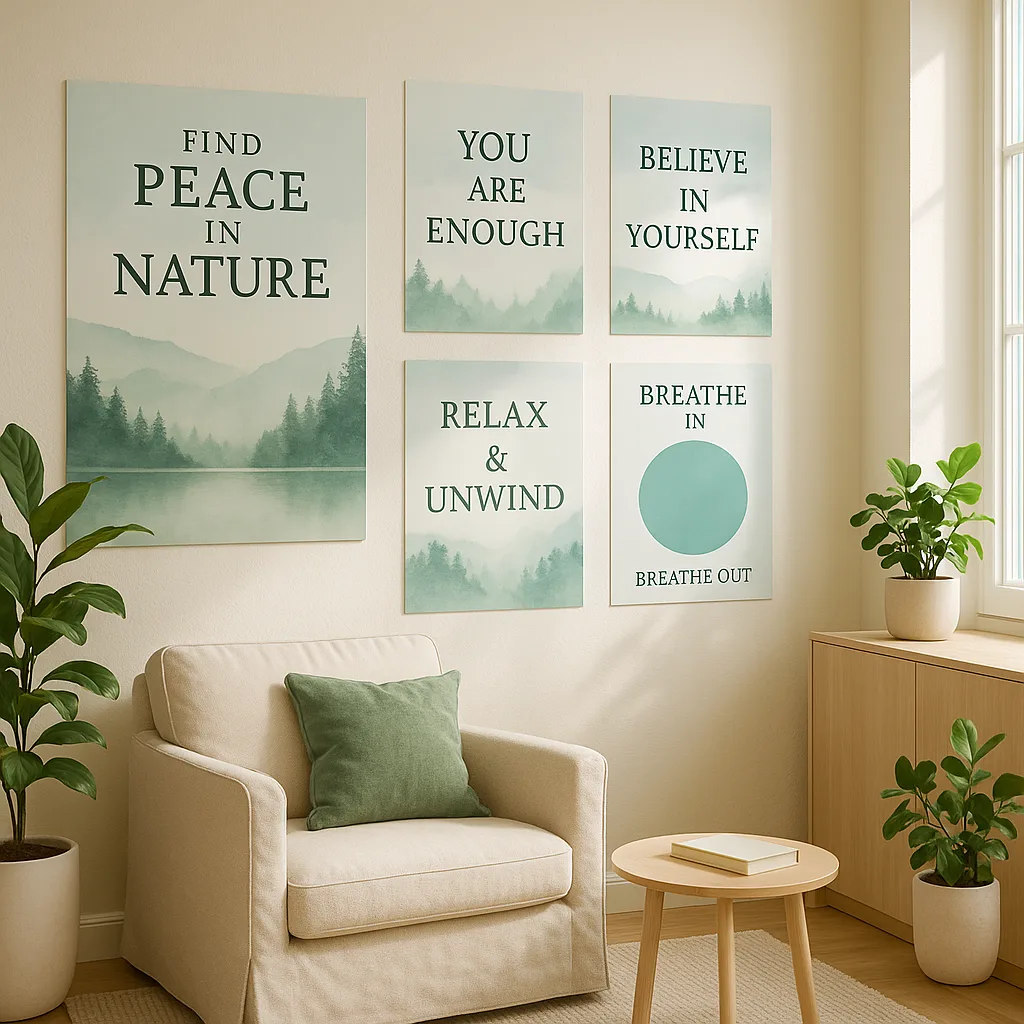Printer for Posters: Mindfulness Stations for Teachers

A thoughtfully designed wellness station can become a sanctuary for stressed educators
Understanding Teacher Burnout: A Visual Perspective
Before diving into solutions, let’s examine the scope of the challenge. Teacher burnout manifests through three primary dimensions: emotional exhaustion, depersonalization, and reduced personal accomplishment. Each dimension responds differently to environmental interventions, which is where strategic visual design becomes crucial.
of teachers report feeling emotionally exhausted weekly
experience symptoms of depersonalization
feel reduced personal accomplishment
1. Affirmation Displays
Positive affirmations work by activating neural pathways associated with self-worth and resilience. However, generic affirmations often fall flat. Using a Amplify Poster Maker, you can create personalized affirmations that resonate with your specific teaching community. Include affirmations that acknowledge real challenges while promoting growth mindset principles.
2. Breathing Exercise Guides
Visual breathing guides serve as immediate stress-intervention tools. Research from Stanford’s stress lab shows that controlled breathing can reduce stress hormones within 90 seconds. Create posters featuring shapes that expand and contract, color gradients for inhale/exhale timing, or nature scenes with breathing prompts. These visual cues make mindful breathing accessible even during the busiest school days.
3. Progress Tracking Visuals
Teachers often focus so intently on student progress that they forget their own growth. Visual progress trackers for personal wellness goals create accountability and celebration opportunities. Design monthly wellness calendars, mood tracking charts, or gratitude walls where educators can add sticky notes. These interactive elements transform passive viewing into active engagement.
Step 3: Design with Intention
Color psychology plays a crucial role in wellness space design. Blues and greens promote calm, while warm earth tones create comfort. Avoid overstimulating bright reds or oranges in relaxation areas. Furthermore, typography matters – choose fonts that are easily readable from a distance, with sufficient white space to prevent visual overwhelm.
When creating your designs, consider incorporating nature imagery. Biophilic design principles show that even printed images of nature can reduce stress and improve cognitive function. Mountains, forests, or ocean scenes provide mental escape routes during challenging days.
Step 4: Create Interactive Elements
Static posters provide consistent reminders, but interactive elements encourage active participation. Design QR codes linking to guided meditations, create tear-off sheets with daily affirmations, or establish a “gratitude gallery” where teachers can post appreciation notes. These participatory features transform the wellness station from a passive display into a living, breathing support system.
Template Library: Ready-to-Print Wellness Resources
To help you get started immediately, I’ve developed several evidence-based templates that address common educator stressors. Each design incorporates psychological principles while remaining visually appealing:
Measuring Impact: The ROI of Wellness Investments
When administrators question the poster printer price for wellness initiatives, share these compelling statistics from schools that have implemented visual wellness programs:
Your Next Steps: Building a Culture of Wellness
Creating visual mindfulness stations is just the beginning. Here’s your action plan for sustainable wellness culture:
Immediate Actions
Survey staff about stressors and preferred wellness supportsWeek 1 Goals
Create your first set of breathing exercise posters and affirmation displays. Start small with 3-5 high-impact visuals in your most-used teacher spaces.Short-term Goals
Establish wellness station in teacher workroomMonth 1 Targets
Expand to include interactive elements like mood trackers and gratitude walls. Begin collecting feedback and measuring initial impact on stress levels.Long-term Vision
Integrate wellness visuals throughout campusYear 1 Outcomes
Develop a comprehensive visual wellness program with monthly themes, seasonal updates, and teacher-led design initiatives. Measure and celebrate improved retention rates.Sustainability Plan
Build teacher leadership team for wellnessOngoing Success
Create a wellness committee that regularly updates displays, shares design responsibilities, and ensures the program evolves with changing needs.Conclusion: Your Journey to Wellness Begins Today
As educators, we often pour so much into our students that our own cups run empty. Visual mindfulness stations offer a practical, evidence-based solution that acknowledges both the challenges and the incredible strength of the teaching profession. By investing in a quality printer for posters wellness stations, you’re not just decorating walls – you’re building infrastructure for sustainable educator well-being.
Remember, every journey begins with a single step. Whether you start with one breathing exercise poster or create an entire wellness gallery, you’re making a powerful statement: teacher wellness matters. Your mental health matters. And when we care for ourselves, we model resilience, self-compassion, and healthy boundaries for our students.
I invite you to join this wellness revolution. Share your wellness station photos, connect with other educators prioritizing self-care, and most importantly, be gentle with yourself as you navigate this journey. Together, we can transform education from a profession of burnout to one of sustainable passion and purpose.
Ready to create your own wellness station? Explore our range of school poster makers and discover how affordable it can be to invest in educator wellness. Because when teachers thrive, students flourish.

